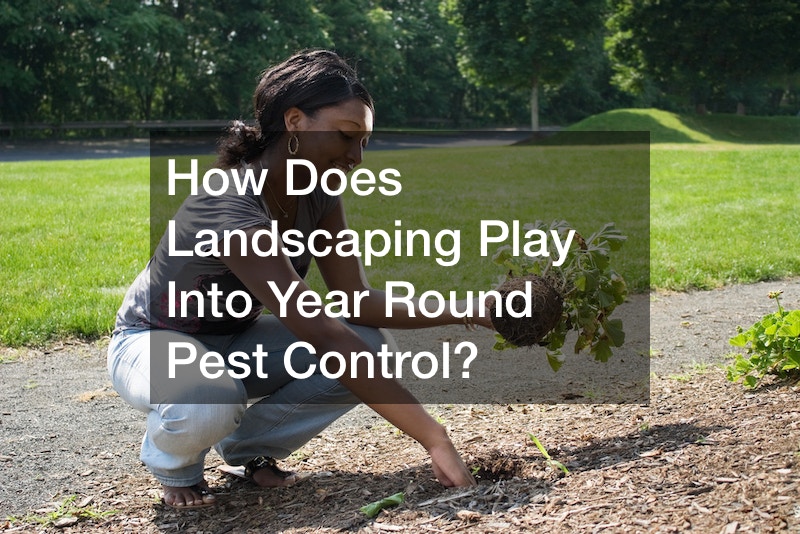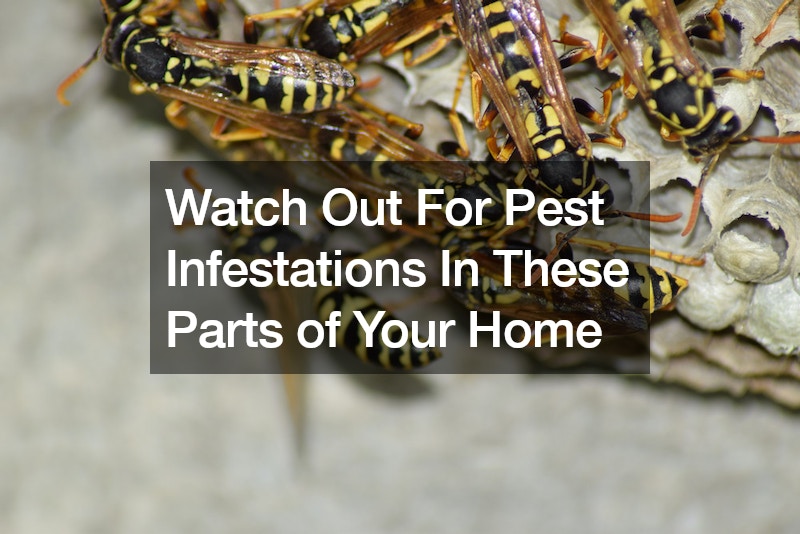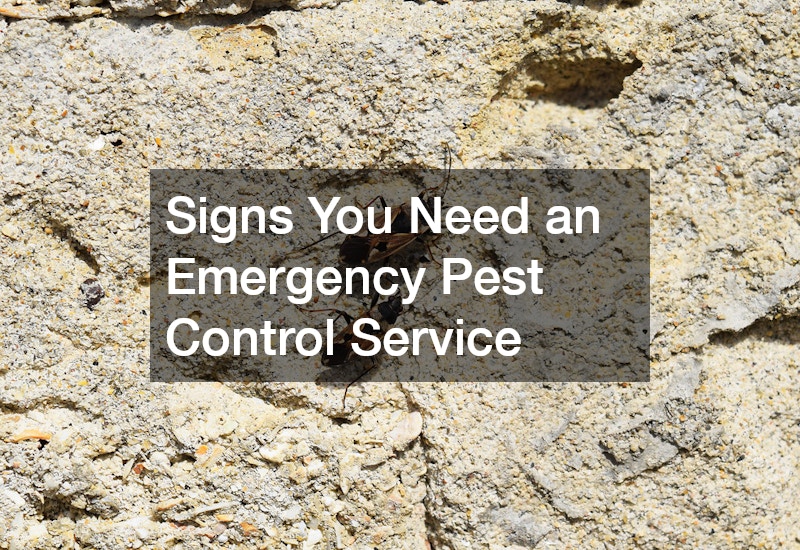Three seasons of the year offer ideal outdoor conditions, but enjoying time in your yard means creating a gorgeous landscape and a pest-free environment. Your new gazebo won’t do you much good if no one can stand going outside due to the mosquitoes or ticks.
While you will need pesticides to kill the worst of the problem, proper lawn and tree care can help prevent and rid your property and home of pests. If you want year round pest control, your landscaping matters. Certain aspects of a yard draw pests, especially insects, to it. When you remove their ideal environment, you remove the attractiveness they find in your yard and home.
Let’s look at how you can alter your landscape to discourage pests from moving into your yard.

First Steps to a Pest-Proof Lawn
Maintain a clean yard. When anything from leaves to trash to discarded furniture sits in the yard, it attracts pests because it provides them with a hiding place.
Before taking any other actions, clean up the yard completely. Remove junk. Purchase heavy-duty plastic trash canisters for trash bags to go in until trash pick up or the day of the week you drive them to the dump.
Store these canisters on the edge of your yard, away from your home. Always bag trash in heavy-duty trash bags.
Haul junk to the dump or hire someone to do so. Until picked up, pile it on the edge of the property, at the roadside but within your property. This keeps it all away from your yard and your home.
When trash in the yard gets wet, it offers a breeding ground for mosquitoes and flies. The sooner you clean your yard, the better control you’ll have over the bug problem.
Regular Lawn Maintenance
In the city, you can hire a commercial lawn maintenance service to maintain your lawn. If you reside in the countryside, you’ll probably need to do the yard work yourself.
Rake your yard first. Ticks love leaves on the ground. They also adore trees but we’ll get to that later.
Either bag your leaves and remove them to the local dump or use them as an element of a good fire in your outdoor fire pit or outdoor stove. Just make sure that you store them in a large plastic trash canister with a tight-fitting lid so nothing crawls into them.
Mow your lawn. Trim any tall weeds using a weed whacker. If you only have a few weeds, use a handheld hedge trimmer, a device that looks a lot like a giant pair of scissors.
Remove the lawn cuttings. You should only have a well-manicured lawn or dirt left when you finish.
If you reside in an area where grass grows dismally or not at all, such as a desert, xeriscape the lawn. Use natural, indigenous plantings combined with rock gardens and hardscapes to create a landscape that you love but bugs hate.

Removing Dead and Dying Trees and Shrubs
Hire a professional tree removal service to remove any dead or nearly dead trees from the property. This one activity goes a long way toward year round pest control because the pests won’t have this place to hide and spawn.
Understandably, you might have a tree you love that fell ill. Call an arborist for a consultation to find out if the tree has a fighting chance and how to save it.
Tree removal services typically also offer stump grinding services. Have any tree stumps in your yard removed completely. These two projects contribute to termite control since they have no place to develop.
Lawn Pest Control
Lawn pest control offers a reliable way to ensure that your hard work on your lawn and trees pays off with year round pest control. Applying an outdoor pesticide to kill or control pests doesn’t necessarily hurt the rest of the ecosystem.
Use a natural pesticide or an insect-specific pesticide. For example, a mosquito control company uses treatments on your yard and trees that only stop mosquitos instead of also acting as a bee extermination service.
We need bees, called good pollinators because they help gardens grow, helping create about one-third of the world’s food supply. They also contribute to about half of the oils, fibers, and other raw materials in the world. These tiny, hard-working stingers only sting when they feel threatened, so create an area of the yard, preferably on its border, just for them.
Search out pollinator-attracting flowers that grow well in your area and plant them as part of your garden care. A pollinator garden also attracts hummingbirds who help eat bugs. A garden bed for bees creates a win-win situation since you choose their little spot in your yard.
You will need an exterminator to aid in your year round pest control of fleas and ticks. These small, annoying creatures can carry serious diseases. They naturally love trees and underbrush, so if your lawn includes mature trees and a variety of heights of plantings, they will find it attractive. You don’t have to share it with them though, because pesticides exist that only kill the ticks and fleas. Some products simply dissuade them from coming to your yard.
Permanent Bug Abatement
After you’ve completed all of those steps, you’ve got a yard you want to spend time in but bugs don’t. You’ve got regular maintenance to do to achieve year round pest control.
Some of these items involve the outside of your home and the utility buildings in your yard. For example, power washing, also called pressure washing, your home removes algae, bacteria like gloeocapsa magma, mildew, mold, and pest pheromones. It also makes the exterior of the home look new.
Have your home power-washed a few days before having it treated for pests. This provides the exterminator with an edge since it offers their pesticides a pristine environment for the application. The power washing and home pest control spraying go a long way toward year round pest control, but there’s more to do.
Keeping the interior of your home clean and pest-free helps keep the outside of your home free of pests. Deep-clean your home once a month and spot-clean it each week. This includes vacuuming, mopping, countertop cleaning, etc.

Yard Tips for Year Round Pest Control
While you work toward year round pest control, realize that you will need to conduct ongoing maintenance to keep it pest-free. This means either doing yard work each week or hiring a lawn care service to do so.
Plant beds of lavender throughout your yard. This lovely flowering plant repels fleas and mosquitoes plus other insects. Placing a planter of lavender close to your front door stops flies from entering.
Home improvement expert, Bob Vila, recommends planting chrysanthemums. The gorgeous flower nicknamed mums contains pyrethrum, a key ingredient in many insecticides. Planting these beauties goes a long way towards achieving year round pest control because it deters ants, bed bugs, fleas, Japanese beetles, roaches, spider mites, and ticks.
Grow lemongrass in containers to help control mosquitoes in your yard. The lemongrass plant provides citronella, a common ingredient in candles used as a mosquito repellant. The insects hate the plant itself, so plant this around any conversation or dining area in your outdoor living space.
The scent created by the sunny yellow flower, the marigold, repels aphids, mosquitoes, and nematodes. Although pleasing to humans, they detest this flower so much that they openly avoid contact with it.
Plant mint to deter mosquitos. Use this beautiful scent as ground cover in lieu of grass. It spreads quickly and offers multiple uses. The same mint that mosquitos hate provides the taste found in mint toothpaste, mint juleps, and mint tea. Pick the leaves. Wash them, then use them in salads, cold or hot drinks, such as tea, and chew them as a natural breath freshener.
Address Any Standing Water in the Yard
Standing water – even a rain puddle – offers an ideal breeding ground for mosquitoes. They see it as a condo complex all their own. Fill in the puddle with dirt and pack it down. Fill holes in your yard and driveway so puddles cannot form.
The birdbath you placed in your garden for looks can also attract these awful insects. Instead of getting rid of its beauty, add a fountain mechanism to it. Home improvement stores offer these for less than $100. You turn your standing water into motioned water and insects don’t come around, but birds still like it.
Check your potted plants, too. If water backs up into their trays, it can cause the same issue. Careful watering alleviates this problem.
Clean Your Roofing Gutters
Clogged rain gutters create a standing water problem, too. It’s one you can’t see from the ground, so check your home’s gutters each month. Clean them thoroughly.
Check and Clean Your Roof
Although you’re focusing on year round pest control for your yard, check your roof. Get on a ladder to check it because you can’t see everything from the ground, typically only the edges.
Clean it off each season and after each major thunderstorm or snowstorm. Bugs can nest on your roof.

Examine and Clean the Eaves and Porch Ceiling
Ditch the wasps and hornets that develop nests in corners of the eaves, window exteriors, and porch ceilings. They choose these areas to create nests in areas with protection from the wind.
Put on long sleeves, long pants, gloves, and face protection, ideally. Purchase pesticides (bug spray) developed specifically to kill them. Once you have assembled your hornet and wasp-killing supplies, go to work!
Stand at least four feet away from the nest. Raise the pesticide can and direct a full-stream application directly onto the nest. This kills anything inside it and renders it useless to the flying insect.
If you observe one of these creatures flying around, wait for it to land. Remain at least four feet away. Spray the pesticide directly onto the insect. Wait for it to die.
Now for the cleanup. Once you know the nest has been rendered useless and its former residents dead, knock it down with a stick that keeps you at least four feet from it. Keep your pesticide handy in case anything manages to survive the pesticide onslaught.
Take care in dealing with these nests and insects because they sting. Their sting hurts much worse than that of a bee and some of them carry substances in their stingers that can cause a person to go into anaphylactic shock.
Once you’ve killed them and knocked down their nests, sweep everything up and place it in a lawn garage bag. Tie the bag shut and place it in the trash canister away from your home.
Use Natural Hardscapes to Eradicate Growth Areas
Instead of maintaining a massive yard of grass, use hardscapes of natural materials. Create a patio out of large stones and cement or mortar. Build a cedar deck onto a home with cedar trees in the yard. Use pine if your yard contains many pines.
The larger the space devoted to hardscapes, the smaller the area where insects and other pests can develop. Because the space remains natural, it still fits in with the outdoors perfectly.
Store Wood Away from Your Home
Keep the cord of wood used for roaring fires in the fireplace far from your home. Mice adore cords of wood and so do snakes. Place your woodpile on the edge of your yard and brave a few steps of cold for fewer pests.
Getting Started with Lawn Improvement
You don’t need to undertake every project at once. Clean your yard first, then choose one project to complete. When you finish it, move on to another project. Eventually, you will eradicate all the things that attract pests. At that point, you only need to conduct a little monthly maintenance to keep your landscape pest free and enjoyable to humans and pets.



